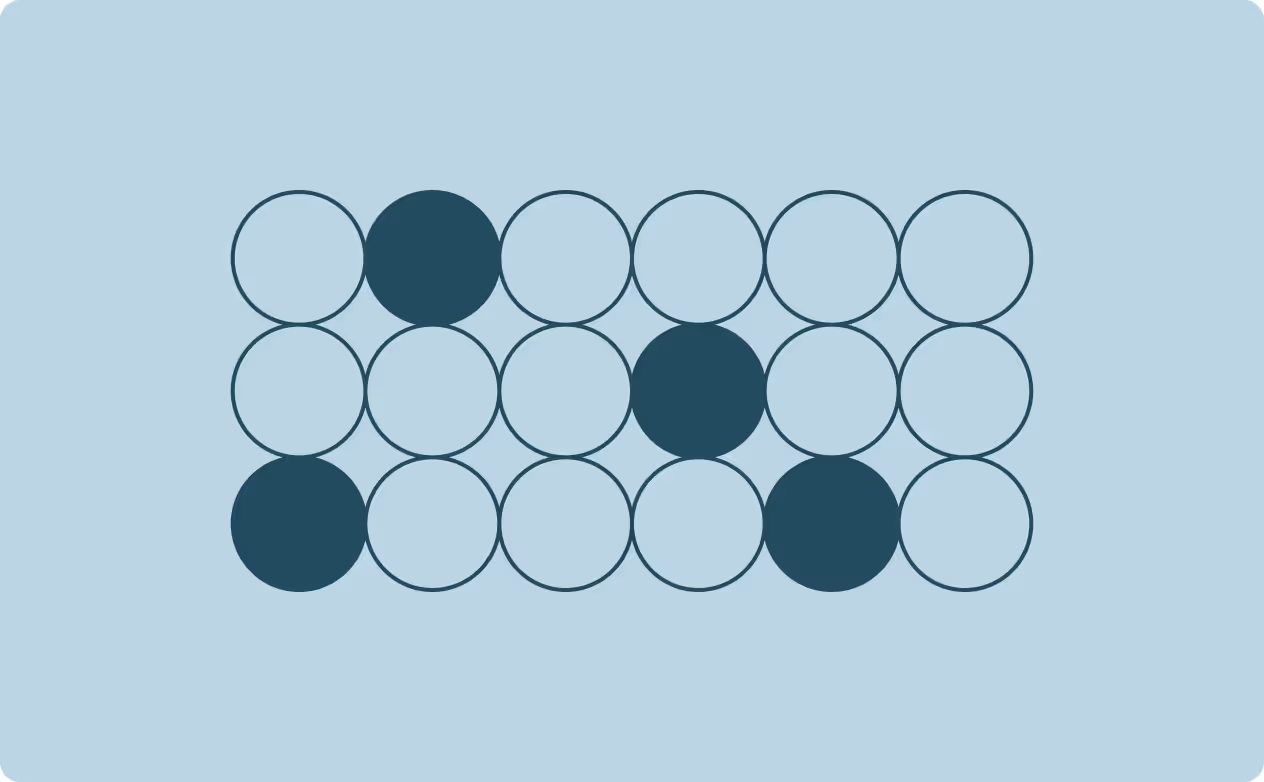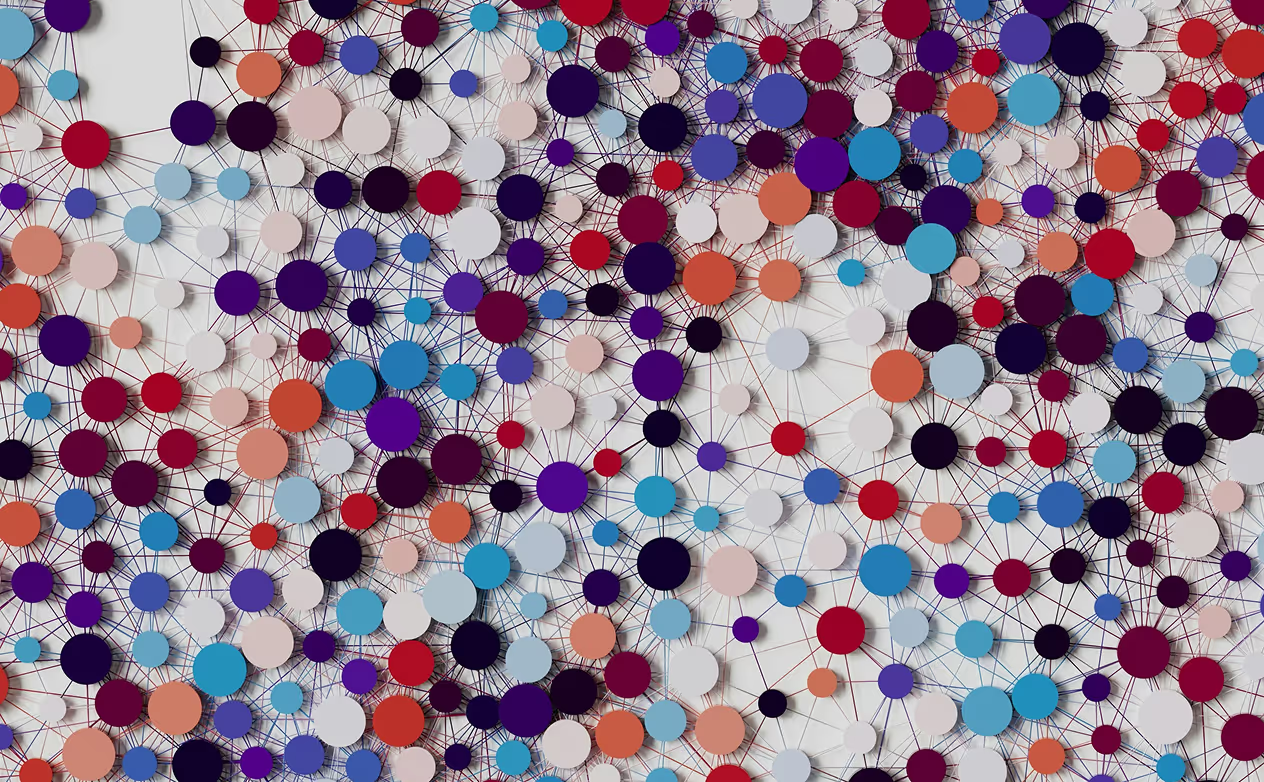Across industries, the organizations that learn fastest, adapt best, and create the most value share a common engine: creativity. In the scholarly literature, creativity is not a vague flourish—it has a precise meaning. Creative work must be original and useful. Among these two pillars, originality (novelty) is the non-negotiable requirement: without novelty, an idea is merely competent replication, not creativity. Utility matters because it determines which original ideas take root in a particular context, but originality is the gate through which every creative contribution must pass (Runco & Jaeger, 2012; Stein, 1953). In an era shaped by AI and rapid tool turnover, this originality-first view offers a rigorous way to evaluate talent, forecast who will embrace and exploit new technologies, and predict downstream performance.
This white paper develops four assertions. First, it clarifies creativity’s definition and emphasizes originality as the essential pillar. Second, it synthesizes evidence that creativity predicts interest in—and effective use of—novel tools, including AI, primarily through well-studied pathways of personal innovativeness and openness that drive technology adoption. Third, it reviews links between creativity and other organizationally valuable attributes—tolerance for ambiguity, optimism/psychological capital, self-direction, and resilience. Fourth, it integrates research connecting creativity to performance in education and in business—at the level of individuals, teams, and firms. Throughout, the tone is pragmatic: originality is measured, cultivated, and translated into value through process and context, not mystique.
Assertion 1: Creativity has two outputs—originality and utility—with originality as the primary and essential pillar
The definitional backbone of creativity has changed little since the mid-20th century. Stein (1953) formulated the classic statement: “The creative work is a novel work that is accepted as tenable or useful or satisfying by a group in some point in time” (p. 311). Contemporary summaries converge on the same core: creativity requires novelty (originality) and appropriateness (usefulness) (Amabile, 1988; Amabile & Pratt, 2016; Plucker, Beghetto, & Dow, 2004; Runco & Jaeger, 2012). Crucially, these dimensions are not symmetrical. Originality is necessary: if a product or idea is not novel relative to its context, it cannot be creative, regardless of how efficient or well-executed it might be (Runco & Jaeger, 2012). Utility is then the contextual qualifier that determines which original contributions count as creative in practice—what Stein called acceptance as “tenable or useful.”
Organizational theories embed this primacy of originality. In the componential model, creativity in organizations is the production of ideas that are both novel and useful, with original ideation as the initial gate and contextual factors (expertise, motivation, and work environment) determining whether those ideas are refined and implemented (Amabile, 1988; Amabile & Pratt, 2016). Educational and psychological frameworks reiterate the same dual criterion (Plucker et al., 2004), and operational measures—from divergent thinking tasks to consensual assessment of products—explicitly score originality and then evaluate usefulness/appropriateness.
Emphasizing originality matters for practice. Assessments that fail to isolate originality cannot credibly claim to measure creativity as the field defines it. Conversely, once originality is established, judging utility becomes a matter of fit to goals, users, or constraints. In short: no originality, no creativity; originality plus utility yields creative value (Runco & Jaeger, 2012; Stein, 1953).
Assertion 2: Creativity predicts interest in—and ability to use—tools, including AI
Direct longitudinal studies tying creativity scores to AI proficiency are only beginning to appear, but there is a robust, convergent body of research that explains why creative people are more likely to embrace and exploit new tools. The core mechanism runs through personal innovativeness and openness to experience—dispositions consistently linked to technology adoption.
In information systems, Personal Innovativeness in IT (PIIT) is defined as an individual’s willingness to try out new information technologies. PIIT reliably predicts intentions to adopt and actual usage across contexts, and it moderates the Technology Acceptance Model (TAM) pathways from perceived usefulness and perceived ease of use to behavioral intention (Agarwal & Prasad, 1998; Venkatesh & Davis, 2000). Large-scale reviews and meta-analyses of TAM/UTAUT show that these belief structures explain substantial variance in adoption and use across hundreds of studies, and that personality dispositions—notably openness—feed into perceived usefulness/ease of use (King & He, 2006; Schepers & Wetzels, 2007; Venkatesh, Morris, Davis, & Davis, 2003; Venkatesh, Thong, & Xu, 2012). Independent of TAM, technology readiness research likewise finds that traits capturing optimism toward and innovativeness with technology predict adoption (Parasuraman, 2000; Parasuraman & Colby, 2015).
Where does creativity fit? Personality research shows that creative achievement and potential are most strongly associated with openness to experience—the trait that underwrites curiosity, cognitive exploration, and tolerance for novelty (Feist, 1998). Field studies in MIS connect the Big Five to technology usage, with openness often emerging as a positive predictor of adoption and use intentions (Devaraj, Easley, & Crant, 2008; McElroy, Hendrickson, Townsend, & DeMarie, 2007). Put simply, people who generate original ideas tend to be the same people who seek out, tinker with, and integrate unfamiliar tools.
Beyond dispositional pathways, studies have begun to connect creativity to adoption of novel data and digital platforms. For example, creative users have been shown to be more apt to reuse and adopt open government data platforms, a domain that—like AI—rewards exploratory engagement with unfamiliar, information-rich tools (Alexopoulos, Saxena, Rizun, Matheus, & Janssen, 2024). In organizational settings, educational and workplace research repeatedly finds that individuals high in creative thinking are earlier adopters and more versatile users of digital tools when usefulness and ease of use are acceptable (Devaraj et al., 2008; Venkatesh et al., 2003, 2012).
AI adds two wrinkles. First, AI can amplify productivity and output quality when paired with human ideation and judgment; second, timing and process matter for originality. Human–computer interaction and organizational creativity literatures caution that workflows that overvalue AI outputs in human-AI collaboration can increase fixation—converging too quickly on familiar patterns—which can dampen originality (Shalley, Zhou, & Oldham, 2004; Baer, 2012). Translating that to best practices, creative individuals are likely to adopt AI rapidly and extract more value from it, provided workflows encourage human ideation in partnership with AI augmentation. That process design keeps originality intact while leveraging AI for search, synthesis, or refinement.
Assertion 3: Creative individuals are more likely to demonstrate tolerance for ambiguity, optimism/psychological capital, self-direction, and resilience
Creative work unfolds in uncertainty. It is therefore unsurprising that creative individuals tend to score higher on tolerance for ambiguity (Zenasni, Besançon, & Lubart, 2008). Reviews across psychology and management agree on a positive, if variable, association between ambiguity tolerance and creative thinking, while also noting that measurement quality matters (Furnham & Marks, 2013; McLain, 2015). In practice, this means creative employees are less rattled by poorly specified problems or shifting constraints—exactly the conditions that characterize AI adoption and digital transformation.
A second, complementary strand concerns optimism and psychological capital (PsyCap). PsyCap comprises hope, efficacy, resilience, and optimism; a comprehensive meta-analysis links PsyCap to better attitudes, behaviors, and performance at work (Avey, Reichard, Luthans, & Mhatre, 2011). Multiple field studies show that positive states and agentic beliefs facilitate idea generation and creative persistence (Amabile & Pratt, 2016; Rego, Sousa, Marques, & e Cunha, 2012). This is not naïve cheerfulness; it is a resource that sustains experimentation through setbacks and criticism—core realities of innovation.
Values research adds self-direction to the profile. In Schwartz’s refined theory of basic values, Self-Direction (thought/action) sits within the openness-to-change cluster that promotes exploration and independent judgment (Schwartz et al., 2012). Cross-cultural studies associate these values with everyday creativity across domains (Lebedeva, Schwartz, Van de Vijver, Plucker, & Bushina, 2019). Self-directed employees do not wait for permission to test the new tool, run the pilot, or build the first prototype. They initiate.
Finally, resilience—both as a PsyCap component and as a standalone construct—shows positive links with creative performance through mechanisms such as reappraisal and efficacy (Avey et al., 2011; Amabile & Pratt, 2016). In large change programs, resilient creative contributors stay engaged when goals, data, or tools shift mid-stream.
A balanced view includes edges. Meta-analytic personality profiles indicate that highly creative people are, on average, more open and independent, and sometimes less agreeable—traits that can produce friction in bureaucratic or highly standardized environments (Feist, 1998). The managerial task is not to “smooth out” creativity but to design context—clear goals, psychological safety, and progress cues—so that ambiguity tolerance, optimism, self-direction, and resilience translate into executed ideas rather than conflict (Shalley et al., 2004).
Assertion 4: Creativity predicts performance across business contexts
The education literature provides a clear signal: creativity predicts achievement. A meta-analysis of 120 studies (N ≈ 52,000) reported a reliable, positive association between creativity and academic achievement across decades, subjects, and measures (Gajda, Karwowski, & Beghetto, 2017). Classic longitudinal work on the Torrance Tests of Creative Thinking found that early creative potential forecasts later accomplishments, complementing (and in some analyses exceeding) the predictive utility of IQ for real-world creative achievement (Cramond, Matthews-Morgan, Bandalos, & Zuo, 2005; see also reviews summarized in Plucker et al., 2004). These findings matter for business because they identify creativity as a foundational capability in the talent pipeline.
At work, meta-analytic evidence shows that creative/innovative performance relates positively to task performance and citizenship behaviors, and negatively to counterproductive behaviors (Harari, Reaves, & Viswesvaran, 2016). In other words, people who generate and develop original, useful ideas tend to be the same people managers rate as strong performers and reliable colleagues. Classic organizational studies found that personal and contextual factors—such as learning orientation, challenging work, and supportive leadership—elevate employee creativity and, in turn, performance (Oldham & Cummings, 1996; Gong, Huang, & Farh, 2009; Shalley et al., 2004). Importantly, creativity can be trained: quantitative reviews report that well-designed creativity training programs produce meaningful gains in creative problem solving, especially when they teach process skills and involve real problems (Scott, Leritz, & Mumford, 2004).
Creativity is the seed; innovation is the harvest. A team-level meta-analysis covering three decades identified climates and processes that translate idea generation into implemented innovation—the step that yields measurable business value (Hülsheger, Anderson, & Salgado, 2009). Complementary studies emphasize that implementation behaviors (championing, coalition building, experimentation) are distinct from idea generation and must be intentionally supported (Baer, 2012). The managerial levers are well known: set challenging goals, grant autonomy, ensure resources, and model openness to novel suggestions (Amabile & Pratt, 2016; Shalley et al., 2004). When these conditions are present, team creativity is more likely to become shipped features, better customer experiences, and improved processes.
Marketing and innovation research links creativity to new-product success and sales growth, including in high-technology firms (Im & Workman, 2004). At the firm level, large industry studies connect creative capability with financial outperformance and market leadership. IBM’s Global CEO Study concluded that creativity is the top leadership competency for navigating complexity (IBM Institute for Business Value, 2010). McKinsey’s multicountry analysis reported that companies with higher creativity scores were more likely to post above-average revenue growth, total return to shareholders, and innovation metrics (McKinsey & Company, 2017). Forrester’s “Creative Dividend” study found that firms that foster creativity were more likely to achieve double-digit revenue growth and to lead their markets (Forrester Consulting, 2014). While these industry reports are not randomized experiments, they triangulate with the academic evidence: where originality is generated and utility is realized, business value follows.
Conclusion
Originality is the front door to creativity. People who generate original ideas are more inclined—and better prepared—to explore new tools, including AI, because the same dispositions that underwrite creativity (openness, innovativeness, agency) also drive technology adoption. They more often bring the adaptive attributes organizations need during change—tolerance for ambiguity, optimism/psychological capital, self-direction, and resilience. And when environments are designed to translate ideas into implementation, creativity predicts performance: higher individual ratings, stronger team innovation, better new-product outcomes, and superior firm-level results. If you are hiring, upskilling, or leading AI transformation, start by measuring and enabling originality, then build the context that converts originality into utility—and utility into business value.
References (APA)
Agarwal, R., & Prasad, J. (1998). A conceptual and operational definition of personal innovativeness in the domain of information technology. *Information Systems Research, 9*(2), 204–215. https://doi.org/10.1287/isre.9.2.204
Amabile, T. M. (1988). A model of creativity and innovation in organizations. *Research in Organizational Behavior, 10*, 123–167.
Amabile, T. M., & Pratt, M. G. (2016). The dynamic componential model of creativity and innovation in organizations: Making progress, making meaning. *Research in Organizational Behavior, 36*, 157–183. https://doi.org/10.1016/j.riob.2016.10.001
Avey, J. B., Reichard, R. J., Luthans, F., & Mhatre, K. H. (2011). Meta-analysis of the impact of positive psychological capital on employee attitudes, behaviors, and performance. *Human Resource Development Quarterly, 22*(2), 127–152. https://doi.org/10.1002/hrdq.20070
Baer, M. (2012). Putting creativity to work: The implementation of creative ideas in organizations. *Academy of Management Journal, 55*(5), 1102–1119. https://doi.org/10.5465/amj.2009.0470
Alexopoulos, C., Saxena, S., Rizun, N., Matheus, R., & Janssen, M. (2024). Are creative users more apt in reusing and adopting Open Government Data (OGD)? *Thinking Skills and Creativity, 52*, 101478. https://doi.org/10.1016/j.tsc.2024.101478
Cramond, B., Matthews-Morgan, J., Bandalos, D., & Zuo, L. (2005). A report on the 40-year follow-up of the Torrance Tests of Creative Thinking: Alive and well in the new millennium. *Gifted Child Quarterly, 49*(4), 283–291. https://doi.org/10.1177/001698620504900402
Devaraj, S., Easley, R. F., & Crant, J. M. (2008). Research note—How does personality matter? Relating the five-factor model to technology acceptance and use. *Information Systems Research, 19*(1), 93–105. https://doi.org/10.1287/isre.1070.0153
Feist, G. J. (1998). A meta-analysis of personality in scientific and artistic creativity. *Personality and Social Psychology Review, 2*(4), 290–309. https://doi.org/10.1207/s15327957pspr0204_5
Forrester Consulting. (2014). *The creative dividend: How creativity impacts business results*. Adobe. https://www.adobe.com/content/dam/acom/en/offer/creative-dividend/pdf/creative-dividend-report.pdf
Furnham, A., & Marks, J. (2013). Tolerance of ambiguity: A review of the recent literature. *Psychology, 4*(9), 717–728. https://doi.org/10.4236/psych.2013.49102
Gajda, A., Karwowski, M., & Beghetto, R. A. (2017). Creativity and academic achievement: A meta-analysis. *Journal of Educational Psychology, 109*(2), 269–299. https://doi.org/10.1037/edu0000133
Gong, Y., Huang, J.-C., & Farh, J.-L. (2009). Employee learning orientation, transformational leadership, and employee creativity: The mediating role of creative self-efficacy. *Academy of Management Journal, 52*(4), 765–778. https://doi.org/10.5465/amj.2009.43670890
Harari, M. B., Reaves, A. C., & Viswesvaran, C. (2016). Creative and innovative performance: A meta-analysis of relationships with task, citizenship, and counterproductive job performance dimensions. *European Journal of Work and Organizational Psychology, 25*(4), 495–511. https://doi.org/10.1080/1359432X.2015.1134491
Hülsheger, U. R., Anderson, N., & Salgado, J. F. (2009). Team-level predictors of innovation at work: A comprehensive meta-analysis spanning three decades of research. *Journal of Applied Psychology, 94*(5), 1128–1145. https://doi.org/10.1037/a0015978
IBM Institute for Business Value. (2010). *Capitalizing on complexity: Insights from the Global CEO Study*. https://www.ibm.com/thought-leadership/institute-business-value/report/ceo-study
Im, S., & Workman, J. P. (2004). Market orientation, creativity, and new product performance in high-technology firms. *Journal of Marketing, 68*(2), 114–132. https://doi.org/10.1509/jmkg.68.2.114.27788
King, W. R., & He, J. (2006). A meta-analysis of the technology acceptance model. *Information & Management, 43*(6), 740–755. https://doi.org/10.1016/j.im.2006.05.003
Lebedeva, N., Schwartz, S. H., Van de Vijver, F. J. R., Plucker, J., & Bushina, E. (2019). Domains of everyday creativity and personal values. *Frontiers in Psychology, 10*, 2681. https://doi.org/10.3389/fpsyg.2019.02681
McElroy, J. C., Hendrickson, A. R., Townsend, A. M., & DeMarie, S. M. (2007). Dispositional factors in internet use: Personality versus cognitive style. *MIS Quarterly, 31*(4), 809–820. https://doi.org/10.2307/25148821
McKinsey & Company. (2017). *Creativity’s bottom line: How winning companies turn creativity into business value and growth*. https://www.mckinsey.com/capabilities/growth-marketing-and-sales/our-insights/creativitys-bottom-line
McLain, D. L. (2015). Ambiguity tolerance in organizations: Definitional clarification and perspectives on future research. *Frontiers in Psychology, 6*, 344. https://doi.org/10.3389/fpsyg.2015.00344
Oldham, G. R., & Cummings, A. (1996). Employee creativity: Personal and contextual factors at work. *Academy of Management Journal, 39*(3), 607–634. https://doi.org/10.5465/256657
Parasuraman, A. (2000). Technology readiness index (TRI): A multiple-item scale to measure readiness to embrace new technologies. *Journal of Service Research, 2*(4), 307–320. https://doi.org/10.1177/109467050024001
Parasuraman, A., & Colby, C. L. (2015). An updated and streamlined technology readiness index (TRI 2.0): A multiple-item scale to measure readiness to embrace new technologies. *Journal of Service Research, 18*(1), 59–74. https://doi.org/10.1177/1094670514539730
Plucker, J. A., Beghetto, R. A., & Dow, G. T. (2004). Why isn’t creativity more important to educational psychologists? Potentials, pitfalls, and future directions in creativity research. *Educational Psychologist, 39*(2), 83–96. https://doi.org/10.1207/s15326985ep3902_1
Rego, A., Sousa, F., Marques, C., & e Cunha, M. P. (2012). Authentic leadership promoting employees’ psychological capital and creativity. *Journal of Business Research, 65*(3), 429–437. https://doi.org/10.1016/j.jbusres.2011.10.003
Runco, M. A., & Jaeger, G. J. (2012). The standard definition of creativity. *Creativity Research Journal, 24*(1), 92–96. https://doi.org/10.1080/10400419.2012.650092
Schepers, J., & Wetzels, M. (2007). A meta-analysis of the technology acceptance model: Investigating subjective norm and moderation effects. *Information & Management, 44*(1), 90–103. https://doi.org/10.1016/j.im.2006.10.007
Schwartz, S. H., Cieciuch, J., Vecchione, M., Davidov, E., Fischer, R., Beierlein, C., Ramos, A., Verkasalo, M., Lönnqvist, J.-E., Demirutku, K., Dirilen-Gumus, O., & Konty, M. (2012). Refining the theory of basic individual values. *Journal of Personality and Social Psychology, 103*(4), 663–688. https://doi.org/10.1037/a0029393
Scott, G., Leritz, L. E., & Mumford, M. D. (2004). The effectiveness of creativity training: A quantitative review. *Creativity Research Journal, 16*(4), 361–388. https://doi.org/10.1080/10400410409534549
Shalley, C. E., Zhou, J., & Oldham, G. R. (2004). The effects of personal and contextual characteristics on creativity: Where should we go from here? *Journal of Management, 30*(6), 933–958. https://doi.org/10.1016/j.jm.2004.06.007
Stein, M. I. (1953). Creativity and culture. *The Journal of Psychology, 36*(2), 311–322. https://doi.org/10.1080/00223980.1953.9712897
Venkatesh, V., & Davis, F. D. (2000). A theoretical extension of the technology acceptance model: Four longitudinal field studies. *Management Science, 46*(2), 186–204. https://doi.org/10.1287/mnsc.46.2.186.11926
Venkatesh, V., Morris, M. G., Davis, G. B., & Davis, F. D. (2003). User acceptance of information technology: Toward a unified view. *MIS Quarterly, 27*(3), 425–478. https://doi.org/10.2307/30036540
Venkatesh, V., Thong, J. Y. L., & Xu, X. (2012). Consumer acceptance and use of information technology: Extending the unified theory of acceptance and use of technology. *MIS Quarterly, 36*(1), 157–178. https://doi.org/10.2307/41410412
Zenasni, F., Besançon, M., & Lubart, T. (2008). Creativity and tolerance of ambiguity: An empirical study. *The Journal of Creative Behavior, 42*(1), 61–73. https://doi.org/10.1002/j.2162-6057.2008.tb01080.x
Photoby ameenfahmy on Unsplash
Photoby JoshuaWoroniecki on Unsplash
Photoby davisuko on Unsplash
Photoby FORTYTWO on Unsplash


